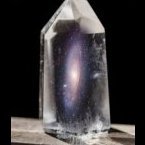-
Posts
268 -
Joined
-
Last visited
Reputation Activity
-
 Jean-Pierre got a reaction from Canute in HMS Revenge by Denis R - Victory Models (Amati) - Scale 1:64
Jean-Pierre got a reaction from Canute in HMS Revenge by Denis R - Victory Models (Amati) - Scale 1:64
I am pretty sure that how well you paint them,, the metal gratings would not look as nice as the wooden ones. Where did you buy these? Caldercraft? How does their scale compare with the etched ones? The wooden gratings that you bought look much better than the majority of similar items found in kits, where the wooden strips are much too narrow compared with the space between them (example: the Artesania and Mamoli gratings). It would be fine, as a comparison, to see the etched gratings next to the wooden items on a picture.
Happy modelling.
-
 Jean-Pierre got a reaction from DenPink in HMS Revenge by Denis R - Victory Models (Amati) - Scale 1:64
Jean-Pierre got a reaction from DenPink in HMS Revenge by Denis R - Victory Models (Amati) - Scale 1:64
I am pretty sure that how well you paint them,, the metal gratings would not look as nice as the wooden ones. Where did you buy these? Caldercraft? How does their scale compare with the etched ones? The wooden gratings that you bought look much better than the majority of similar items found in kits, where the wooden strips are much too narrow compared with the space between them (example: the Artesania and Mamoli gratings). It would be fine, as a comparison, to see the etched gratings next to the wooden items on a picture.
Happy modelling.
-
 Jean-Pierre got a reaction from maggsl_01 in HMS Revenge by Denis R - Victory Models (Amati) - Scale 1:64
Jean-Pierre got a reaction from maggsl_01 in HMS Revenge by Denis R - Victory Models (Amati) - Scale 1:64
I am pretty sure that how well you paint them,, the metal gratings would not look as nice as the wooden ones. Where did you buy these? Caldercraft? How does their scale compare with the etched ones? The wooden gratings that you bought look much better than the majority of similar items found in kits, where the wooden strips are much too narrow compared with the space between them (example: the Artesania and Mamoli gratings). It would be fine, as a comparison, to see the etched gratings next to the wooden items on a picture.
Happy modelling.
-
 Jean-Pierre got a reaction from mtaylor in Barque Stefano kit development by MarisStella.hr
Jean-Pierre got a reaction from mtaylor in Barque Stefano kit development by MarisStella.hr
maria is an excellent model, and this one is even more promising. Congratulations. I'll love to follow your project(s).
JP
-
 Jean-Pierre got a reaction from mtaylor in La Reale De France by kpnuts - FINISHED - Heller - PLASTIC - 1/75
Jean-Pierre got a reaction from mtaylor in La Reale De France by kpnuts - FINISHED - Heller - PLASTIC - 1/75
What a beautiful model indeed. As I said earlier,I also built this model, a long time ago, I'm afraid.
With regards to the canopy, I painstakingly glue little lengths of gold thread, bit by bit along the edge of the plastic kit item, but in my case I used lengths that were only about 2/3 from yours, which, I think gave a cleaner result. What I also did is to cover up all edges with lengths of gold thread, which finishes the canopy quite nicely.
As far as the oars are concerned, I think there were seven rowers per oar, the more amidships one using the tip of the oar, the other six using one space each in the handle. This would mean only 7 plots in total (5 intermediate plots)!
I know there are a few oars from the Réale preserved in the Musée de la Marine in Paris as well as part of the sculptures, but alas, could not find pictures of them.
Happy modeling to you.
JP
-
 Jean-Pierre got a reaction from GrandpaPhil in Dutch Whaler by Jean-Pierre - Sergal - modified 17th century flute
Jean-Pierre got a reaction from GrandpaPhil in Dutch Whaler by Jean-Pierre - Sergal - modified 17th century flute
Alistair, I do hope that some day, you will restart your excellent build.
Indeed, the plank nipper is simple as fast to use (no soaking, no drying), it is cheap and you cannot get burnt by using it. The only issue is convex shapes, as can be seen at the stern, or on the inner bulwark on the fore deck. Now on this model, I took the risk, and after some careful sanding, filling, varnishing, the grooves of the nipper can hardly be seen, I dare say.
I forgot to mention that while doing the upper part of the second planking, I felt iut necessary to do the inner bulwarks.
Inner bulwarks
The original vessel was built as cheaply as possible, and therefore were single skinned. Sergal suggests to make the inner planking with the same planks as the second planking which would have made a triple skinned vessel at that level. Of course, no one would notice, but the overall thickness of the bulwarks would be too much: indeed, a single skinned vessel would most surely show the ends of frames, and I wanted this feature on my model. So I used for the inner bulwark layer the battens left over from the deck, and added planks 3x1mm to simulate the ribs. Everything was painted a nice green colour, but later on, a forum member mentioned that the bulwarks were indeed painted black, or grey, or left dark wood. So I later repainted the whole area black.
Here are the following pics of the second planking:
So that s how the project looks like now. Present job is to add the garboard strakes or whatever they are named, then a second layer tinting varnish will be applied to the hull, then a layer of matt varnish, as the hull is way too glossy for my taste.
And then...Mmmmm: the ornaments, window frames, gunport and rudder hinges.
-
 Jean-Pierre got a reaction from popeye the sailor in La Reale De France by kpnuts - FINISHED - Heller - PLASTIC - 1/75
Jean-Pierre got a reaction from popeye the sailor in La Reale De France by kpnuts - FINISHED - Heller - PLASTIC - 1/75
My language happens to be french. For some unknown reason, my Apple computer tends to try and translate from Spanish sites into what Google wants me to recognize as a french translation. NO WAY: I always have to revert to the Spanish text to understand what is written. So googleing your message into French might be the best way to ...encrypt it!! I am definitely sure, as they operate on a world basis, that they actually know English quite well. I even thought, but I may be wrong on this, that their operations had been taken over by Airfix!
I also built this exquisite model a number of years ago, and if I were to do it all over, I would try to duplicate the 7 handles on the rows: this is, I think, a fairly obvious shortcoming on an otherwise superb model. Another point that deserve attention is the masts: I of course replaced the plastic sails with cotton ones, and the masts were not stiff enough to carry their weight without bending. So, I think they are better replaced with wooden ones (as their shape is quite simple, this would not be too difficult to achieve. Or they could be strengthened with a wooden core.
Happy modelling, and good job with your extra rows!
JP
-
 Jean-Pierre got a reaction from mtaylor in La Reale De France by kpnuts - FINISHED - Heller - PLASTIC - 1/75
Jean-Pierre got a reaction from mtaylor in La Reale De France by kpnuts - FINISHED - Heller - PLASTIC - 1/75
My language happens to be french. For some unknown reason, my Apple computer tends to try and translate from Spanish sites into what Google wants me to recognize as a french translation. NO WAY: I always have to revert to the Spanish text to understand what is written. So googleing your message into French might be the best way to ...encrypt it!! I am definitely sure, as they operate on a world basis, that they actually know English quite well. I even thought, but I may be wrong on this, that their operations had been taken over by Airfix!
I also built this exquisite model a number of years ago, and if I were to do it all over, I would try to duplicate the 7 handles on the rows: this is, I think, a fairly obvious shortcoming on an otherwise superb model. Another point that deserve attention is the masts: I of course replaced the plastic sails with cotton ones, and the masts were not stiff enough to carry their weight without bending. So, I think they are better replaced with wooden ones (as their shape is quite simple, this would not be too difficult to achieve. Or they could be strengthened with a wooden core.
Happy modelling, and good job with your extra rows!
JP
-
 Jean-Pierre got a reaction from Tim Curtis in Dutch Whaler by Jean-Pierre - Sergal - modified 17th century flute
Jean-Pierre got a reaction from Tim Curtis in Dutch Whaler by Jean-Pierre - Sergal - modified 17th century flute
Alistair, I do hope that some day, you will restart your excellent build.
Indeed, the plank nipper is simple as fast to use (no soaking, no drying), it is cheap and you cannot get burnt by using it. The only issue is convex shapes, as can be seen at the stern, or on the inner bulwark on the fore deck. Now on this model, I took the risk, and after some careful sanding, filling, varnishing, the grooves of the nipper can hardly be seen, I dare say.
I forgot to mention that while doing the upper part of the second planking, I felt iut necessary to do the inner bulwarks.
Inner bulwarks
The original vessel was built as cheaply as possible, and therefore were single skinned. Sergal suggests to make the inner planking with the same planks as the second planking which would have made a triple skinned vessel at that level. Of course, no one would notice, but the overall thickness of the bulwarks would be too much: indeed, a single skinned vessel would most surely show the ends of frames, and I wanted this feature on my model. So I used for the inner bulwark layer the battens left over from the deck, and added planks 3x1mm to simulate the ribs. Everything was painted a nice green colour, but later on, a forum member mentioned that the bulwarks were indeed painted black, or grey, or left dark wood. So I later repainted the whole area black.
Here are the following pics of the second planking:
So that s how the project looks like now. Present job is to add the garboard strakes or whatever they are named, then a second layer tinting varnish will be applied to the hull, then a layer of matt varnish, as the hull is way too glossy for my taste.
And then...Mmmmm: the ornaments, window frames, gunport and rudder hinges.
-
 Jean-Pierre got a reaction from Izzy Madd in H.M.S. Victory, Heller, 1/100, Onward and Upwards.
Jean-Pierre got a reaction from Izzy Madd in H.M.S. Victory, Heller, 1/100, Onward and Upwards.
er of Good luck with your build. I built the same model a number of years ago, and while the project did not appear too difficult, there are still some points that will require your attention;
The rigging is certainly the most difficult part of the build, and being a plastic model in a relatively small scale, the tension of each line has to be determined with care, and a block of beeswax is of great help: run each line on it to prevent later fluffing and slacking of the threads. The jib boom receives quite a few lines and definitely deserves replacing by a metal rod as it will almost certainly bend or break at some point of your ship's career.
Another point to consider is the vulnerability of the guns and gun ports, especially during the rigging process. If you do not rig the lower guns, it is advisable to...nail them together with their carriage to the deck, or you may have some guns going adrift... The gun ports I would fit at a very late stage of the build.
Finally, about after market products, you may want to look at some of the fantastic build logs on this site and judge by yourself if they are worth the investment. One item I would certainly buy is the decorated entry port. The chains I made with black thread and they look convincing enough to me
-
 Jean-Pierre got a reaction from J11 in CSS ALABAMA by arnie59 - Revell - 1/96 - PLASTIC - kit bash
Jean-Pierre got a reaction from J11 in CSS ALABAMA by arnie59 - Revell - 1/96 - PLASTIC - kit bash
I know it's in german, but you may be interested to have a look at what I consider to be a very nice build of the Revell Kearsarge (much modified as well):http://www.wettringer-modellbauforum.de/forum/index.php?page=Thread&threadID=36813.
love to see how you manage to reqt
As far as the Alabama is concerned, I have had this unbuilt kit on a shelf for decades, but never started it, because I found the built up model rather clumsy: silly, drooping stem, impossible open stern, masts too short. I really will love to see if you can restore her in her former beauty.
If that should prove impossible, I read that Bluejacket is issuing a kit of her...
Happy modelling. I'm looking forward to your progress!
JP
-
 Jean-Pierre got a reaction from GLakie in Royal Louis 1780 by Ulises Victoria - FINISHED - Mamoli - Scale 1/90 - French 126-gun ship
Jean-Pierre got a reaction from GLakie in Royal Louis 1780 by Ulises Victoria - FINISHED - Mamoli - Scale 1/90 - French 126-gun ship
Am I right to think that those metal frames do not simplify the build. I wonder if a method "à la Corel" would not be easier after all?!
-
 Jean-Pierre got a reaction from Ulises Victoria in Royal Louis 1780 by Ulises Victoria - FINISHED - Mamoli - Scale 1/90 - French 126-gun ship
Jean-Pierre got a reaction from Ulises Victoria in Royal Louis 1780 by Ulises Victoria - FINISHED - Mamoli - Scale 1/90 - French 126-gun ship
I am not a very qualified modeller, and the only time I had to sand a wooden surface with nails in it resulted in a fiasco, because, obviously, the metal was much harder to sand than the wood. So I would say that in this case, a rotary tool with a small sanding disc will be needed not to sand too much away from the surrounding wood. But I'm sure anyone but me will be aware of that .
Nice job on a nice model.
As for Ronald's concern about missing or damaged parts in his kit, I would suggest that he does not wait too long to check if all the parts are there. Mamoli being (temporarily?) out of business due to fire damage, re-ordering items may be problematic. He definitely should check if all the decorative metal pieces are OK, and if all the gun barrels are there. Most other pieces could I suppose, be bought from other sources.
JP
-
 Jean-Pierre got a reaction from ronald305 in Royal Louis 1780 by Ulises Victoria - FINISHED - Mamoli - Scale 1/90 - French 126-gun ship
Jean-Pierre got a reaction from ronald305 in Royal Louis 1780 by Ulises Victoria - FINISHED - Mamoli - Scale 1/90 - French 126-gun ship
I am not a very qualified modeller, and the only time I had to sand a wooden surface with nails in it resulted in a fiasco, because, obviously, the metal was much harder to sand than the wood. So I would say that in this case, a rotary tool with a small sanding disc will be needed not to sand too much away from the surrounding wood. But I'm sure anyone but me will be aware of that .
Nice job on a nice model.
As for Ronald's concern about missing or damaged parts in his kit, I would suggest that he does not wait too long to check if all the parts are there. Mamoli being (temporarily?) out of business due to fire damage, re-ordering items may be problematic. He definitely should check if all the decorative metal pieces are OK, and if all the gun barrels are there. Most other pieces could I suppose, be bought from other sources.
JP
-
 Jean-Pierre got a reaction from edmay in Royal Louis 1780 by Ulises Victoria - FINISHED - Mamoli - Scale 1/90 - French 126-gun ship
Jean-Pierre got a reaction from edmay in Royal Louis 1780 by Ulises Victoria - FINISHED - Mamoli - Scale 1/90 - French 126-gun ship
This is an excellent build, and I feel sorry I did not follow all of your efforts so far. Your decks are wonderfully done, and I suppose you have solved the issues of how to weather, or tint, the decks. One thing I did in the past is just tone down the deck colours with a grey wash before covering with a few layers of matte varnish. I had been using just like you, different shades of wood, and that looked fine, but the contrast was too evident, which is never the case on a full size wooden deck.
Your idea of using a mosquito mesh glued on an acryl sheet also is what I use for windows. I use curtain fabric (the type that looks like mosquito mesh, but, I think, is a little bit finer. This fabric I paint with a mix of aluminium and matte black paint (or gunmetal colour), and I glue the fabic with PVA glue that dries transparent. Of course, if I don't want the background to be visible, tgthen I paint the backside os the acryl sheet black (NOT sky blue as this does not look good in my opinion. I would also cut the windows diagonally like you did, but for visible windows, I would take care to cut and glue the window at an exact angle of 45°. Just an idea...
I also understand that the Mamoli solution of the metal gun ports is far from ideal. For instance, I noticed that the Friesland model, if built straight from the box, has the guns sticking much too far out of the hull, due presumably to metal gun ports that are not deep enough. Of course, this may not be the case on the Royal Louis model. Seeing what the problems of correct alignment are, seeing that the metal items do not have square corners, and finally considering the possible difficulty of sanding the first plank layer nicely flush with the metal ports, I think I would choose the solution of glueing wooden strips between the bulkheads onto which the guns would be attached. Looks difficult, but I am sure this would be both simpler and faster than with the metal ports.
Just another simple idea for the deck planking. If you should want to add the beloved treenails but find it too intricate, here is an easy alternative. Mark the places where the treenails should come with a sewing needle (not a pin which would damage the plank ends. Then give the tiny holes some consistancy with a sharp n°4 pencil. This should preferably be done before weathering, so that the holes will be filled with you tinting material (or wash).
I look forward to seeing your hull planking. If you are like me, you will find this one of the most rewarding parts of your nuild, and certainly not the most difficult step.
Happy modelling, and thanks for sharing the pics.
JP
-
 Jean-Pierre got a reaction from mtaylor in Royal Louis 1780 by Ulises Victoria - FINISHED - Mamoli - Scale 1/90 - French 126-gun ship
Jean-Pierre got a reaction from mtaylor in Royal Louis 1780 by Ulises Victoria - FINISHED - Mamoli - Scale 1/90 - French 126-gun ship
This is an excellent build, and I feel sorry I did not follow all of your efforts so far. Your decks are wonderfully done, and I suppose you have solved the issues of how to weather, or tint, the decks. One thing I did in the past is just tone down the deck colours with a grey wash before covering with a few layers of matte varnish. I had been using just like you, different shades of wood, and that looked fine, but the contrast was too evident, which is never the case on a full size wooden deck.
Your idea of using a mosquito mesh glued on an acryl sheet also is what I use for windows. I use curtain fabric (the type that looks like mosquito mesh, but, I think, is a little bit finer. This fabric I paint with a mix of aluminium and matte black paint (or gunmetal colour), and I glue the fabic with PVA glue that dries transparent. Of course, if I don't want the background to be visible, tgthen I paint the backside os the acryl sheet black (NOT sky blue as this does not look good in my opinion. I would also cut the windows diagonally like you did, but for visible windows, I would take care to cut and glue the window at an exact angle of 45°. Just an idea...
I also understand that the Mamoli solution of the metal gun ports is far from ideal. For instance, I noticed that the Friesland model, if built straight from the box, has the guns sticking much too far out of the hull, due presumably to metal gun ports that are not deep enough. Of course, this may not be the case on the Royal Louis model. Seeing what the problems of correct alignment are, seeing that the metal items do not have square corners, and finally considering the possible difficulty of sanding the first plank layer nicely flush with the metal ports, I think I would choose the solution of glueing wooden strips between the bulkheads onto which the guns would be attached. Looks difficult, but I am sure this would be both simpler and faster than with the metal ports.
Just another simple idea for the deck planking. If you should want to add the beloved treenails but find it too intricate, here is an easy alternative. Mark the places where the treenails should come with a sewing needle (not a pin which would damage the plank ends. Then give the tiny holes some consistancy with a sharp n°4 pencil. This should preferably be done before weathering, so that the holes will be filled with you tinting material (or wash).
I look forward to seeing your hull planking. If you are like me, you will find this one of the most rewarding parts of your nuild, and certainly not the most difficult step.
Happy modelling, and thanks for sharing the pics.
JP
-
 Jean-Pierre got a reaction from CaptainSteve in Royal Louis 1780 by Ulises Victoria - FINISHED - Mamoli - Scale 1/90 - French 126-gun ship
Jean-Pierre got a reaction from CaptainSteve in Royal Louis 1780 by Ulises Victoria - FINISHED - Mamoli - Scale 1/90 - French 126-gun ship
This is an excellent build, and I feel sorry I did not follow all of your efforts so far. Your decks are wonderfully done, and I suppose you have solved the issues of how to weather, or tint, the decks. One thing I did in the past is just tone down the deck colours with a grey wash before covering with a few layers of matte varnish. I had been using just like you, different shades of wood, and that looked fine, but the contrast was too evident, which is never the case on a full size wooden deck.
Your idea of using a mosquito mesh glued on an acryl sheet also is what I use for windows. I use curtain fabric (the type that looks like mosquito mesh, but, I think, is a little bit finer. This fabric I paint with a mix of aluminium and matte black paint (or gunmetal colour), and I glue the fabic with PVA glue that dries transparent. Of course, if I don't want the background to be visible, tgthen I paint the backside os the acryl sheet black (NOT sky blue as this does not look good in my opinion. I would also cut the windows diagonally like you did, but for visible windows, I would take care to cut and glue the window at an exact angle of 45°. Just an idea...
I also understand that the Mamoli solution of the metal gun ports is far from ideal. For instance, I noticed that the Friesland model, if built straight from the box, has the guns sticking much too far out of the hull, due presumably to metal gun ports that are not deep enough. Of course, this may not be the case on the Royal Louis model. Seeing what the problems of correct alignment are, seeing that the metal items do not have square corners, and finally considering the possible difficulty of sanding the first plank layer nicely flush with the metal ports, I think I would choose the solution of glueing wooden strips between the bulkheads onto which the guns would be attached. Looks difficult, but I am sure this would be both simpler and faster than with the metal ports.
Just another simple idea for the deck planking. If you should want to add the beloved treenails but find it too intricate, here is an easy alternative. Mark the places where the treenails should come with a sewing needle (not a pin which would damage the plank ends. Then give the tiny holes some consistancy with a sharp n°4 pencil. This should preferably be done before weathering, so that the holes will be filled with you tinting material (or wash).
I look forward to seeing your hull planking. If you are like me, you will find this one of the most rewarding parts of your nuild, and certainly not the most difficult step.
Happy modelling, and thanks for sharing the pics.
JP
-
 Jean-Pierre got a reaction from Ulises Victoria in Royal Louis 1780 by Ulises Victoria - FINISHED - Mamoli - Scale 1/90 - French 126-gun ship
Jean-Pierre got a reaction from Ulises Victoria in Royal Louis 1780 by Ulises Victoria - FINISHED - Mamoli - Scale 1/90 - French 126-gun ship
This is an excellent build, and I feel sorry I did not follow all of your efforts so far. Your decks are wonderfully done, and I suppose you have solved the issues of how to weather, or tint, the decks. One thing I did in the past is just tone down the deck colours with a grey wash before covering with a few layers of matte varnish. I had been using just like you, different shades of wood, and that looked fine, but the contrast was too evident, which is never the case on a full size wooden deck.
Your idea of using a mosquito mesh glued on an acryl sheet also is what I use for windows. I use curtain fabric (the type that looks like mosquito mesh, but, I think, is a little bit finer. This fabric I paint with a mix of aluminium and matte black paint (or gunmetal colour), and I glue the fabic with PVA glue that dries transparent. Of course, if I don't want the background to be visible, tgthen I paint the backside os the acryl sheet black (NOT sky blue as this does not look good in my opinion. I would also cut the windows diagonally like you did, but for visible windows, I would take care to cut and glue the window at an exact angle of 45°. Just an idea...
I also understand that the Mamoli solution of the metal gun ports is far from ideal. For instance, I noticed that the Friesland model, if built straight from the box, has the guns sticking much too far out of the hull, due presumably to metal gun ports that are not deep enough. Of course, this may not be the case on the Royal Louis model. Seeing what the problems of correct alignment are, seeing that the metal items do not have square corners, and finally considering the possible difficulty of sanding the first plank layer nicely flush with the metal ports, I think I would choose the solution of glueing wooden strips between the bulkheads onto which the guns would be attached. Looks difficult, but I am sure this would be both simpler and faster than with the metal ports.
Just another simple idea for the deck planking. If you should want to add the beloved treenails but find it too intricate, here is an easy alternative. Mark the places where the treenails should come with a sewing needle (not a pin which would damage the plank ends. Then give the tiny holes some consistancy with a sharp n°4 pencil. This should preferably be done before weathering, so that the holes will be filled with you tinting material (or wash).
I look forward to seeing your hull planking. If you are like me, you will find this one of the most rewarding parts of your nuild, and certainly not the most difficult step.
Happy modelling, and thanks for sharing the pics.
JP
-
 Jean-Pierre got a reaction from keelhauled in CUTTY SARK by keelhauled - Mantua - kit bashed - First wooden ship build
Jean-Pierre got a reaction from keelhauled in CUTTY SARK by keelhauled - Mantua - kit bashed - First wooden ship build
This is an excellent build. Congratulations on your job.
A little suggestion: the ship wheel that is shown on a picture above: did it come with the kit? Looks quite rough, and would certainly deserve replacement, considering the overall quality of your model.
Keep on the good job, and thanks for sharing it.
JP
-
 Jean-Pierre got a reaction from foxy in HMS Victory by foxy - Heller - 1/100 - PLASTIC - with Dafi's etch & resin set
Jean-Pierre got a reaction from foxy in HMS Victory by foxy - Heller - 1/100 - PLASTIC - with Dafi's etch & resin set
I understand you are trying to make the ship look sexier than what the kit offers. May I make a suggestion then? Your hull coppering. If I remember well, I used a mix of antique bronze as a base colour, diluted dark brown as a wash, and light touches of bronze dry brushed. The result comes pretty close to the coppering seen on Cutty Sark (before the fire) (and surely not like the ugly paint that has now been applied to the underside of Victory)
Happy modelling
JP
-
 Jean-Pierre got a reaction from Brian the extraordinaire in Euromodel Como Kit Discussion
Jean-Pierre got a reaction from Brian the extraordinaire in Euromodel Como Kit Discussion
As said before, the best points for Euromdel are, I think:
- their excellent plans
- their unusual subjects
- their far better than average castings
Now I understand that to make these kits really enjoyable subjects, you had better have some experience, and be willing to make the eventual changes that you feel necessary. Master plastic modellers, for instance, almost never build straight from the bos, and I suppose wooden ship modellers do the same: that is the fun of modelling. If you want to make a beautiful model straight from the bos, then go Caldercraft or Victory models. But if you want to extend your skills, and BUILD SOMETHING DIFFERENT, then Eurommodel can be your choice.
Now items like the anchors are in my modest opinion hard to modify, being metal items. I suppose that most modellers would rather buy new items than trying to improve on the kit items: it is a detail, but at that price level, and compared to the castings....
-
 Jean-Pierre got a reaction from Brenticus in Where can I get TINY letters for my ship?
Jean-Pierre got a reaction from Brenticus in Where can I get TINY letters for my ship?
I'm afraid transfer letters will not easily be found at the requested small scale, in the colour you need (gold or white?) or in the correct lettertype (times?). I did mine (on Flying Fish) using Word Art in Windows Word, which I printed out on photo paper in yellow on a black background. I then varnished it with polyurethane varnish so the yellow will (hopefully) not fade.
Another problem with very small transfer letters is that they will be almost impossible to align precisely enough (at least I couldn't)
Now I suppose finding someone who owns an ink jet printer would not be too difficult
-
 Jean-Pierre got a reaction from Brian the extraordinaire in Who makes the best model ships ??? - moved by moderator
Jean-Pierre got a reaction from Brian the extraordinaire in Who makes the best model ships ??? - moved by moderator
I certainly agree with what has been said, but would like to add my little grit of salt.
Italian manufacturers as a general rule, have been on the market for a large number of years and they know what sells. As a result, most of them have in their range some models that barely resembles anything that ever was afloat, or there are some blaring mistakes in their plans. But they still nice models that appeal quite a few modellers. Furthermore, the more critical modeller can still make all adjustments he wants if he wishes so.
Euromodel of Como is one of them, but they have the extra bonus it seems, to have wonderful plans, and superb metal fittings (not their anchors!)
On the other hand, it is true that both Caldercraft and Victory models show an overall excellent accuracy and good materials, even if there are differences between older and newer offerings.
Model Shipways and Bluejacket should also range among the vey best. I'm not a fanatic of solid hulls, that are hard to correct to the right shape (and increase the despatch costs due to the extra volume and weight!), while they are not easy to make them look like real planked hulls without actually planking them over.
JP
By the way, it is sad that I never saw a review or a build log of what looks like an impressive model: the Redjacket clipper!?
Also, I started building a Victory Ship by Bluejacket and had quite a few problems with that kit:
- the solid hull showed huge chunks of wood at both ends, which were a pain to remove
- the stem definitely was not the right angle, so the hull did not show that characteristic straight stem
- details in the kit were very basic and the metal fittings were, say, average
- my plans were a Xerox copy and as soon as something was put on the sheet, the toner would just be brushed off. Luckily, I happened to have another set of the same plans
I wanted to superdetail the model to a ship on which I sailed, but the model has now been on hold for more than 20 years now.
-
 Jean-Pierre got a reaction from geoff in Who makes the best model ships ??? - moved by moderator
Jean-Pierre got a reaction from geoff in Who makes the best model ships ??? - moved by moderator
I certainly agree with what has been said, but would like to add my little grit of salt.
Italian manufacturers as a general rule, have been on the market for a large number of years and they know what sells. As a result, most of them have in their range some models that barely resembles anything that ever was afloat, or there are some blaring mistakes in their plans. But they still nice models that appeal quite a few modellers. Furthermore, the more critical modeller can still make all adjustments he wants if he wishes so.
Euromodel of Como is one of them, but they have the extra bonus it seems, to have wonderful plans, and superb metal fittings (not their anchors!)
On the other hand, it is true that both Caldercraft and Victory models show an overall excellent accuracy and good materials, even if there are differences between older and newer offerings.
Model Shipways and Bluejacket should also range among the vey best. I'm not a fanatic of solid hulls, that are hard to correct to the right shape (and increase the despatch costs due to the extra volume and weight!), while they are not easy to make them look like real planked hulls without actually planking them over.
JP
By the way, it is sad that I never saw a review or a build log of what looks like an impressive model: the Redjacket clipper!?
Also, I started building a Victory Ship by Bluejacket and had quite a few problems with that kit:
- the solid hull showed huge chunks of wood at both ends, which were a pain to remove
- the stem definitely was not the right angle, so the hull did not show that characteristic straight stem
- details in the kit were very basic and the metal fittings were, say, average
- my plans were a Xerox copy and as soon as something was put on the sheet, the toner would just be brushed off. Luckily, I happened to have another set of the same plans
I wanted to superdetail the model to a ship on which I sailed, but the model has now been on hold for more than 20 years now.
-
 Jean-Pierre got a reaction from geoff in mary rose partwork by hachette - moved by moderator
Jean-Pierre got a reaction from geoff in mary rose partwork by hachette - moved by moderator
while excellent kit manufacturers announce kits that never seem to come on the market (Caldercraft HMS Surprise, Amati Revenge), one tends to think about the costs involved with new designs.
On the other hand, they could easily score with updates of their existing kits, and Jotika's Mary Rose certainly would deserve the treatment. I think not only the foredeck could be modified, but I suspect when I look at pictures of the time, that the rear decks too should be significantly higher. And then there is the colouring that makes ships of that period such desirable modelling subjects, and which is rather absent from the original Jotika offering (flags, painting scheme...).
I suppose this could all be scratch built with the Jotika kit as a base, but that would be a tricky business without plans.


















